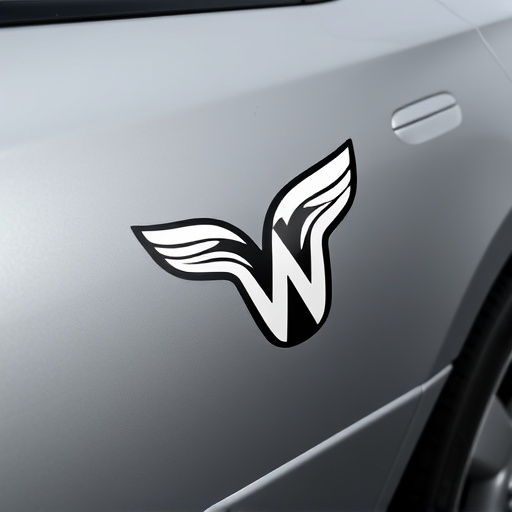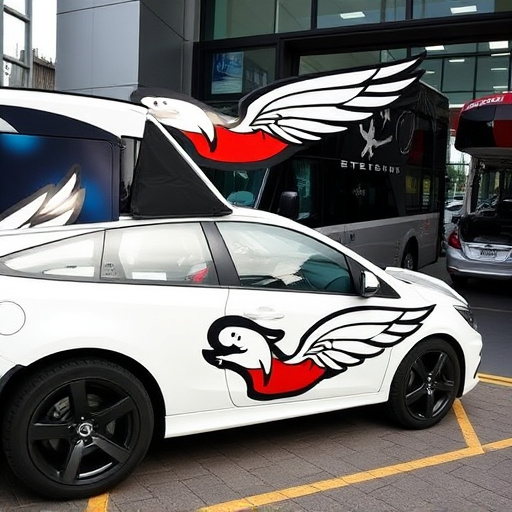Brand identity design in the digital era requires understanding and adapting to platform-specific aesthetics. Instagram emphasizes vibrant visuals and storytelling, while LinkedIn prioritizes clean lines. By aligning designs with these subtleties, brands create cohesive experiences. This extends to physical applications like vehicle wraps, leveraging social media trends for enhanced brand recognition. Effective brand identity design tailors visual narratives to unique channel characteristics, fostering engagement and enhancing brand visibility across diverse audiences.
In today’s digital landscape, adapting your brand identity design for social media platforms is paramount for engaging audiences and fostering growth. Each platform possesses a unique visual language that demands tailored strategies while maintaining brand integrity. Balancing consistency with adaptation, brands can create compelling narratives that resonate across diverse channels. By understanding platform-specific trends and leveraging storytelling techniques, businesses can effectively communicate their values, forge connections, and elevate their brand identity design in a crowded digital world.
- Understanding Platform-Specific Visual Language
- Consistency vs. Adaptation: Balancing Brand Integrity
- Engaging Audiences: Storytelling Across Platforms
Understanding Platform-Specific Visual Language

In today’s digital landscape, each social media platform has its unique visual language and aesthetics that users have come to expect and recognize. When adapting your brand identity design for these platforms, understanding this platform-specific visual language is paramount. This includes recognizing trends, color palettes, and layout preferences that resonate with the target audience on each channel. For instance, Instagram leans towards vibrant visuals and storytelling through images, while LinkedIn prioritizes clean lines and professional branding.
By aligning your brand identity design with these subtleties, you create a cohesive yet tailored experience for your audience. Custom vehicle wraps or vinyl wraps, for example, can be adapted to showcase brand aesthetics on the road, leveraging platforms’ visual trends to enhance recognition. Similarly, services like paint correction, while not directly tied to social media branding, contribute to a polished, professional image that supports strong brand identity across various mediums.
Consistency vs. Adaptation: Balancing Brand Integrity

Brand identity design is about maintaining consistency while also adapting to new mediums. In the case of social media platforms, it’s crucial to strike a balance between preserving your brand’s integrity and tailoring your visual elements for each unique space. While car customization and automotive detailing can enhance physical vehicles, the digital realm requires a different approach.
Just as you wouldn’t apply the same vehicle wrap design across all surfaces (think about the variations between a sedan and an SUV), social media platforms demand specific considerations. From Instagram’s square format to Twitter’s compact threads, each platform dictates how your brand identity is presented. Adaptability doesn’t mean sacrificing core elements; rather, it involves interpreting them creatively within the constraints—and opportunities—of each new environment, ensuring your brand remains instantly recognizable while engaging with diverse audiences.
Engaging Audiences: Storytelling Across Platforms

In today’s digital era, engaging audiences across various social media platforms requires a dynamic approach to brand identity design. Each platform offers unique opportunities and challenges for storytelling, demanding that brands adapt their visual narratives accordingly. A successful brand identity design strategy leverages the distinct characteristics of each channel—be it Instagram’s visual focus, Twitter’s concise communication, or TikTok’s engaging videos—to create consistent yet tailored experiences.
By understanding their target audience’s behavior and preferences on different platforms, designers can craft compelling stories that resonate. For instance, a premium automotive services brand might showcase its products’ sleek aesthetics on Instagram, highlight customer testimonials in short video clips on TikTok, and share behind-the-scenes content on Twitter to foster a sense of community. This multi-platform storytelling approach not only enhances brand visibility but also ensures that consumers receive a comprehensive understanding of the brand’s value proposition, including key selling points like superior heat rejection or scratch protection.
Brand identity design for social media requires a delicate balance between maintaining consistency and adapting to platform-specific visual languages. By understanding the unique characteristics of each platform, brands can create engaging content that resonates with their audiences. Consistency in visual elements and storytelling across platforms strengthens brand recognition while allowing for creative adaptations that cater to the specific needs and preferences of users on each social media venue. This approach ensures a cohesive yet dynamic brand identity that captivates followers and fosters meaningful connections.














